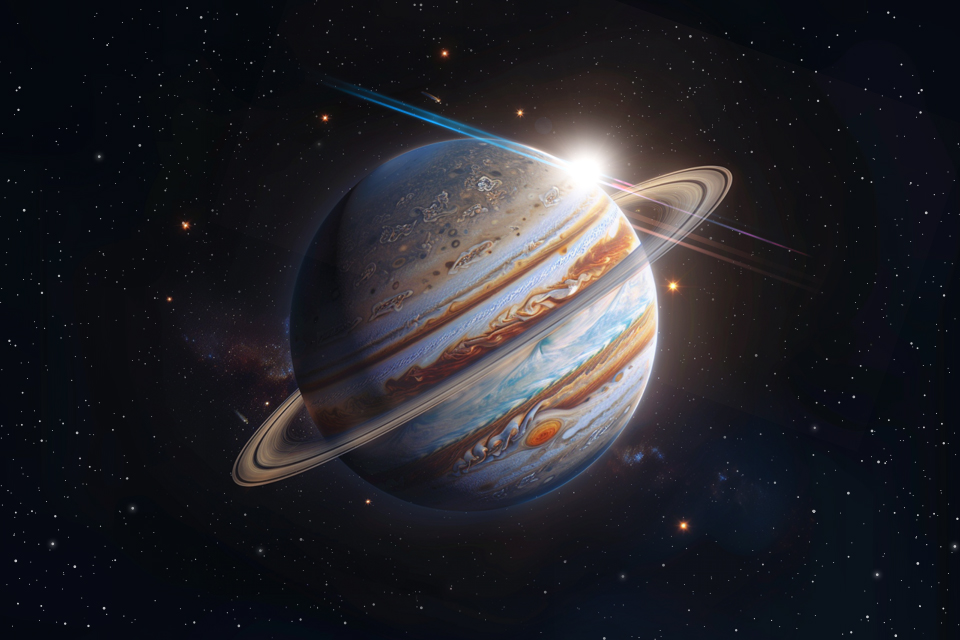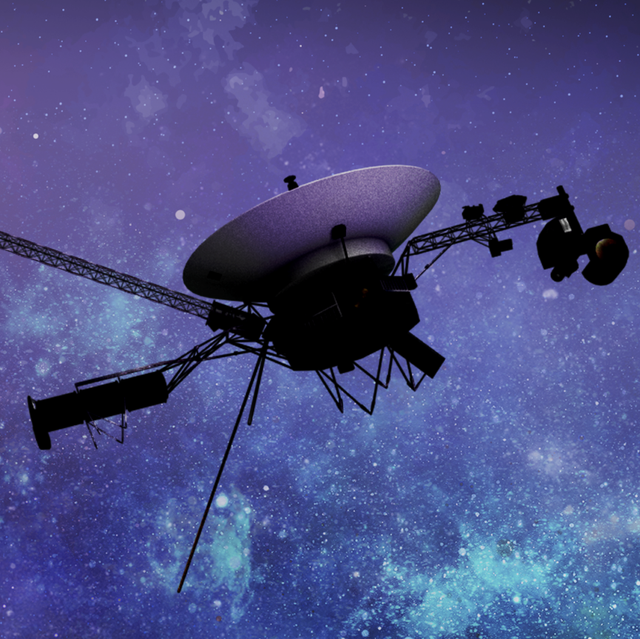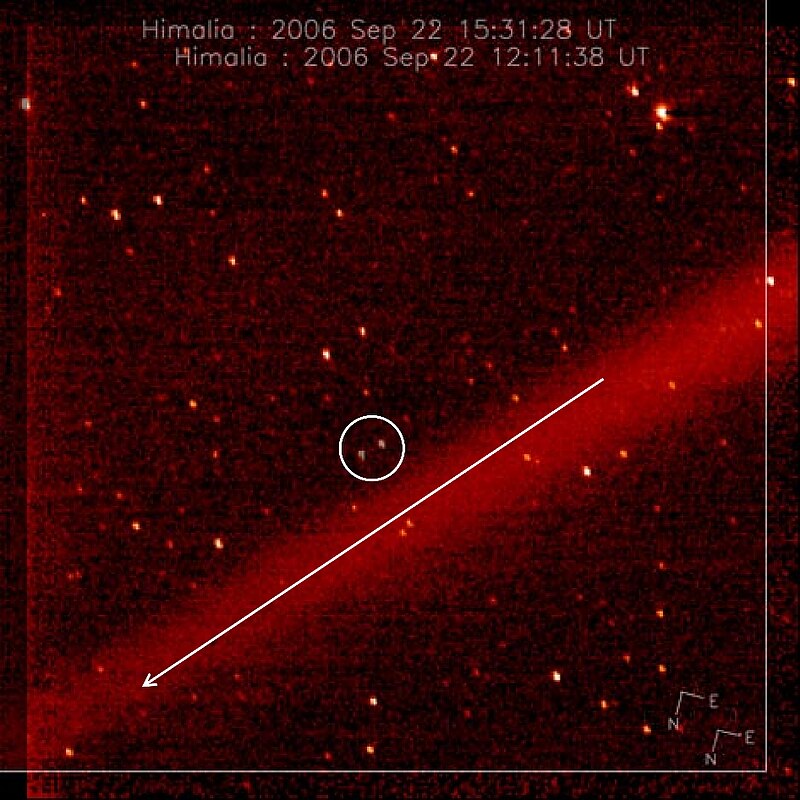On March 4, 1979, the Voyager 1 spacecraft captured the first image of Jupiter’s rings. They turned out to be surprisingly small and indistinct on the largest planet in the solar system. Meanwhile, in the 45 years since then, scientists have learned a lot about them.

Jupiter’s rings
Jupiter’s rings discovered
Saturn is called the “ringed planet” in the Solar System. This is quite unfair, because in fact all four gas giants have them, but the others are not as bright. Not even Jupiter, which is the largest object orbiting our sun. Scientists began to speculate that it, as well as Uranus and Neptune, might have rings in the middle of the 20th century, when it became clear that these structures consist of a large number of individual small particles.
Jupiter’s rings were officially discovered on March 4, 1979, when they were photographed by the Voyager 1 spacecraft. It was the third such system discovered on the planet after Saturn and Uranus. However, this statement is quite controversial. In fact, the first confirmation that the largest planet has a ring was obtained back in 1975, when scientists analyzed the results of studies of its radiation belts made by the Pioneer 11 spacecraft.

The rings of Uranus were discovered in 1977 not by direct observation, but on the basis of how the brilliance of the star SAO 158687 changed when it was covered by the planet. Their first image o them was obtained only in 1986. All this means that Jupiter’s rings were actually discovered even earlier than some others.
In any case, after the discovery of Jupiter’s rings, little was known about them for a long time. It was only in 1995 that the Galileo spacecraft arrived to the vicinity of the largest planet and was able to examine them properly. At the same time, telescopes powerful enough to learn more about them began operating on Earth.
What are Jupiter’s rings made of?
Jupiter’s ring system is quite comparable in size to that of Saturn. However, the particles in it are smaller and there are much fewer of them. Therefore, it is not so easy to see these giant structures.
The brightest element of the system is the Main Ring. Its outer boundary lies at a distance of 129 thousand kilometers, while the radius of Jupiter itself is just over 71 thousand kilometers. The ring is 6500 km wide and 30 to 300 km thick. That is, it is very thin and narrow. But at the same time, it is the most visible of all because it has the highest concentration of particles, especially large debris.
Inside the Main Ring is what is called the “halo ring”. In fact, it is a giant space “bagel” with a width of about 30 thousand kilometers and a thickness of 12,500 kilometers, which is about the same as the diameter of the Earth.

The halo, although the second brightest component of the system, is still significantly inferior to the Main Ring in this respect. The reason for this is that the particles that make up the halo are extremely small and few in number.
Outside the Main Ring there are two more, the outer boundaries of which are at distances of 182 and 226 thousand kilometers from the center of Jupiter and are separated by gaps formed by satellites. They are called “spider rings” because they are extremely dim and have a thin structure.
These structures are called the Amalthea ring and the Thebes ring, in honor of the satellites that move above them and with which they are connected. The first is 2000 km thick and the second is 8400 km thick.
Satellites and rings
Unlike Saturn’s rings, Jupiter’s similar structures are apparently not the result of the breakup of a single large body in orbit around it. Instead, the rings of the largest planet in the solar system are believed to have formed from particles that the solar wind, cosmic rays, and radiation “plucked” from its moons.

The giant torus of the halo ring, for example, is mostly made up of dust that was once part of Io and Europa. It is mostly sulfur, oxygen, and water. These are the substances that evaporate from the surface of the two Galilean moons closest to Jupiter.
Jupiter’s main ring is connected to its satellites Adrastea and Metis and is most likely composed of their material. Careful study of it has shown that it is, in fact, three separate structures. On the outside there is a thin and barely visible ring up to 300 km wide, followed by a gap in which Adrastea moves, then another ring, then a gap in which Metis moves, and finally an inner ring that has no distinct halo border.
Amalthea’s “spider web” ring was formed from material ejected from the satellite of the same name. It is the fifth largest of Jupiter’s moons and moves along the outer edge of the ring. The situation is similar with Phebe, which is “responsible” for the appearance of the outer ring.
The ring of Himalaya
In February 2007, the New Horizons spacecraft, heading for Pluto, performed a gravity manoeuvre near Jupiter. Scientists decided to take advantage of this and take pictures of the giant planet’s satellites. They were greatly surprised to see a band of dust resembling an arc or ring near the Jovian moon Himalia.

The Himalia itself is an object about 170 km in size, moving in an unstable orbit that changes all the time. Currently, its diameter ranges from 9.8 to 13 million km. The existence of the ring formed by this object has not yet been conclusively confirmed, but if it does exist, it is the largest in the Solar System.
At the same time, scientists are confident that this arc is the result of a collision between Himalia and some smaller satellite that occurred no more than a few centuries ago. All this proves that the system of Jupiter’s rings and moons continues to evolve.

